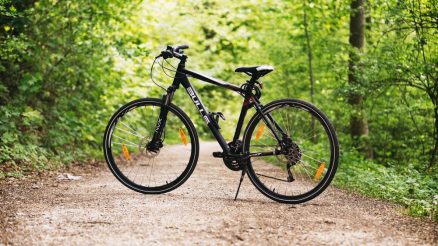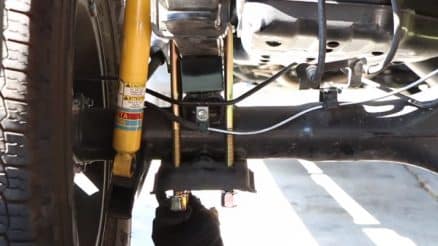What kayak paddle size do I need?
When traversing bodies of water such as lakes, rivers, and oceans, the correct paddle size is crucial. No matter what type, brand, or model of kayak you choose, using a paddle that’s too short can lead to your hands striking the kayak’s sides as you paddle. Conversely, overly long paddles can increase the effort required to paddle, putting additional stress on your shoulder muscles. This can lead to quicker fatigue, particularly due to the kayak’s tendency to move in a zigzag pattern on the water.
Choosing the right kayak paddle length is important, and is considered both an art and a science. However, it is easier than most people make it sound. When deciding on the perfect paddle length for your needs, you not only need to get the right length nit also the best paddle category for your lifestyle, including the right ferrule and blade shape for you as an individual. Here is the ultimate kayak paddle length guide for you.
What paddle length should you get?
The first thing you need to consider when choosing the right paddle length is your height and the the width of the kayak. If you are not sure of the width of your kayak, measure the length of the kayak at its widest point.
Generally, different types of kayaks come with different widths. These are:
- Recreation kayaks measure widths of 26 inches to 30 inches and are 6 to 12 feet long.
- Touring kayaks have widths of 22 inches to 25 inches and are 12 to 15 feet long
- Performance kayaks have widths of 19 inches to 22 inches and measure 15 to 18 feet long
- Whitewater kayaks widths are not as important as the height of the paddler. They are between 7 to 11 feet long.
Kayak paddle length recommendations
If you under 5 feet tall the ideal paddle lengths are:
- 210 cms for a kayak width of 23 inches
- 220cms for a kayak width of 23 inches to 28 inches
- 230 cms for a kayak width of 28 inches to 32 inches
- 240 cms for kayak widths of over 32 inches
If you between 5 feet and 5’6’’ tall the ideal paddle lengths are:
- 215 cms for a kayak width of 23 inches
- 220cms for a kayak width of 23 inches to 28 inches
- 230 cms for a kayak width of 28 inches to 32 inches
- 240 cms for kayak widths of over 32 inches
If you between 5’6’’ and 6’ tall the ideal paddle lengths are:
- 220 cms for a kayak width of 23 inches
- 220cms for a kayak width of 23 inches to 28 inches
- 230 cms for a kayak width of 28 inches to 32 inches
- 250 cms for kayak widths of over 32 inches
If you above 6’ tall the ideal paddle lengths are:
- 220 cms for a kayak width of 23 inches
- 230cms for a kayak width of 23 inches to 28 inches
- 240 cms for a kayak width of 28 inches to 32 inches
- 250 cms for kayak widths of over 32 inches
If you happen to fall between two sizes, always choose the paddle sizer on the lower end even though either sizes would work. However, if you have a shorter torso, going for the longer size can be handy as it makes up for the added reach.
Choosing the right paddle category
The easiest way to narrow down your search for the best paddle is to narrow your search to paddle categories and measure against your paddling lifestyle.
Best paddle for extended trips on moving or flat water
If you plan to spend most of your time on the water, you need to consider going for touring kayaks paddles or performance kayak paddles. Generally, as you move up on the types of paddles, they get lighter. This cuts on the swing weight, which reduces the strain on your joints, therefore reducing fatigue.
True kayaking enthusiasts usually go for paddles with still, responsive, carbon shafts, which are light in weight. Fiberglass or compression molded carbon blades are also lightweight nut stiff enough to deliver power with evert paddle. If you are a paddler who gets sore shoulders fast, you should consider going for lightweight paddles made from carbon composite or fiberglass.
Best paddles for rivers and lakes
If you prefer kayaking in slow moving waters like rivers or on lakes, the best option would be a touring kayak paddle. Touring paddles are the most commonly used paddles ideal for any type of day kayaking, camping exploring and river running. These are made from fiberglass or carbon material, which are warmer on the touch compared to aluminum ones.
If you do not spend too much time on water, you can consider going for a recreational ladle. This is an ideal choice for kayaking exercise, fishing, shirt trips and shore exploration. Generally, recreation paddles are heavier than touring or performance paddles. However, they are also much more durable and more affordable.
If you tour shallow waters with exposure to sand, rocks and gravel, you need to consider paddles that are durable with wide blades. This will provide you with better grip on the shallow waters, even though half the blade is our in the open.
Best paddles for whitewater
Whitewater paddles are the most ideal for kayakers looking for bladed that rarely bite the water. These are built for durability, quick cadence and efficiency. Generally, whitewater paddles made from fiberglass or carbon are much are thicker and provide the needed extra strength for whitewater use. These types of paddles can withstand rugger waterbody conditions with the ability to take on hard knocks with grace.
Because of the conditions whitewater paddles are subjected to, they are prone to breaking regardless of the material or brand. The best choice to reduce the number of times you have to replace the paddle should be one that balances strength and weight.
Short wide blade or long skinny blade?
The best way to determine the best blade for your paddle is by considering your paddling style.
If you are a high angle paddler, you tend to keep the shaft vertical during each stroke, perpendicular to the water. The best blade for your paddling is a short and wider one on a shorter shaft. This gives you an upright paddling style for a powerful, athletic stroke. Shorter shafts are also ideal for paddling through fast cadence.
For low angular paddlers, you tend to keep the paddle parallel to the water in a horizontal position. This is a more relaxed paddling style ideal for a paddle with long, thin bladed. This is the most commonly used paddle in North America and most people prefer this peddling style.
Bottom line
Choosing the best kayak peddle for your needs can be easy when you know what to look for. This kayak paddle length guide gives you all the information you need to choose the best kayak peddle for your needs.





